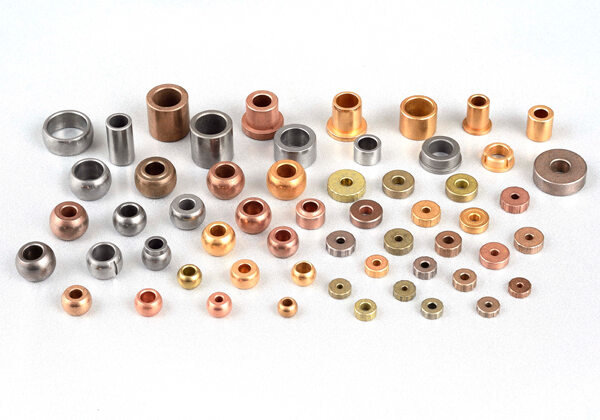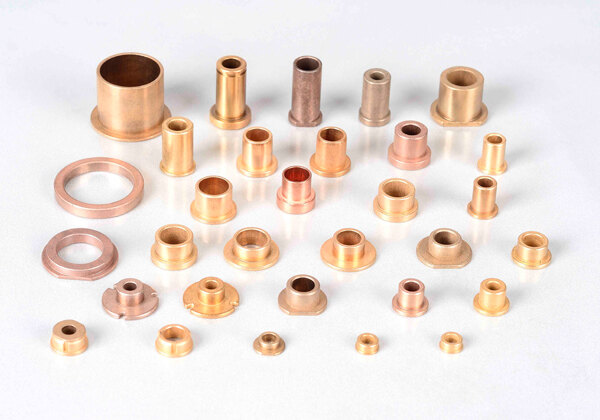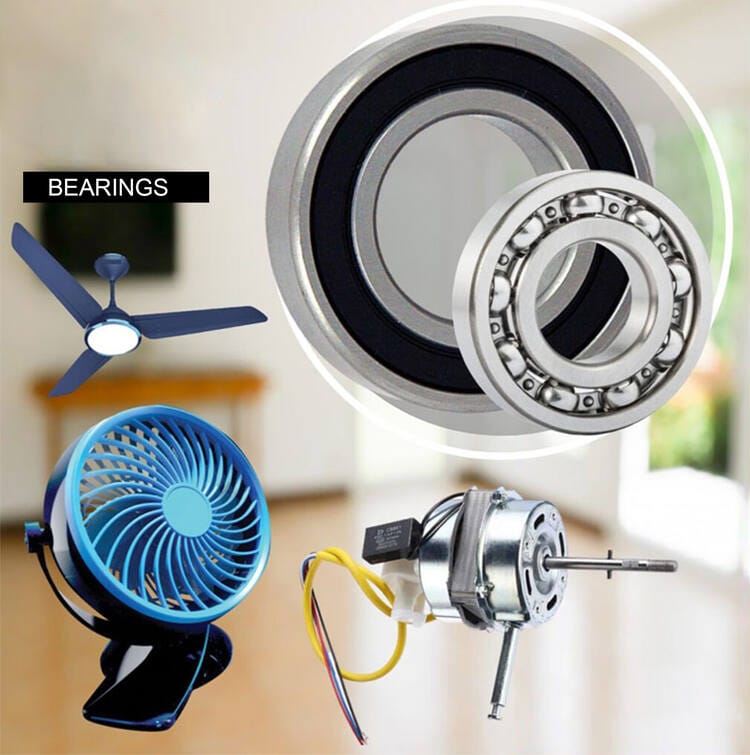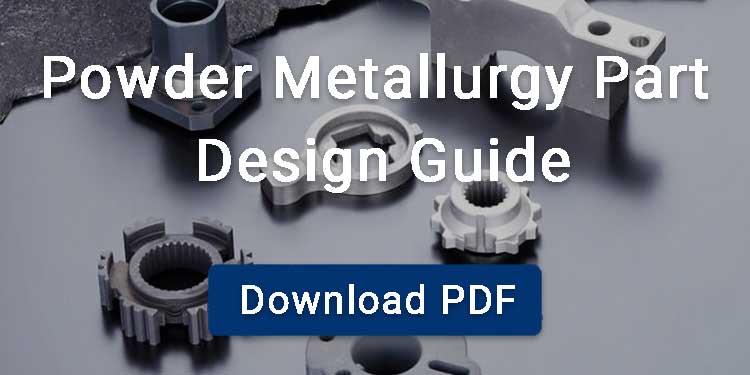Self-lubricating bearings are porous metal or composite bushings that store oil or solid lubricants inside their structure. During motion the lubricant sweeps onto the sliding surface to create a low-friction film, then wicks back into the pores when the shaft stops. This built-in cycle lets the bearing run for years without routine greasing.
Contents
Brief History of Self-Lubricating Bearings
Self-lubricating plain bearings date back to the early 20th century, when engineers began impregnating porous metal bushings with oil. A milestone was the launch of Oilite® bearings in 1930, developed at Chrysler by Carl Breer together with William Sherwood and metallurgist Bill Caulkins.
Later Robert Schroeder introduced dual-material plain bearings In the 1980s, marking another milestone. Over time, the technology evolved with advanced materials, specialized designs, and improved manufacturing techniques.

How Do Self-Lubricating Bearings Works
Self-Lubricating Bearings usually work under three mechanisms:
Oil Impregnated In Porous Metal
Here, the oil or lubricating material is impregnated into the pores of the metal. When bearings are in function and heat up, the oil is released to sliding layers by capillary action, reducing the friction coefficient. The lubricating material is drawn back to the ores when bearings are cool or not working.
Embedded Solid Lubricants
Solid lubricants such as molybdenum sulfide, lead, or graphite are used in such a way that they are embedded into the material. These lubricants migrate to the sliding layers over time, forming a smooth layer and hence reducing friction.
Reaction-Based Lubrication
In some self-lubricating bearings, such material is embedded, which reacts chemically when under stress to create lubricating compounds exactly where they’re needed.
All these three processes are entirely automatic and do not require any sort of external lubrication or maintenance.

Self-Lubricating Bearings Manufacturing Process
Self-lubricating bearings are usually manufactured with the help of a powder metallurgy process. Here are the significant steps of this process:
Material Selection
The first and foremost step in the manufacturing process is selecting metal powder and polymer. Metals such as copper, bronze, or iron-copper are chosen depending on the required properties of the bearings. Sometimes, lubricating material is also mixed here with metal powder and polymer.
Molding
Here the raw material powder is placed into the molds of desired shape bearing and pressed under high pressure this results into the formation of a green part. Here the required shape of bearing is formed and dimensional precision and accuracy is ensured.
Sintering
One of the most important steps of the bearing formation process is the sintering process. Here, the green parts of the desired bearing is sintered under an inert environment, forming bonds at the micro level between the particles. The material is densified to enhance cohesive forces and structural integrity of the bearing. Sinteirng temperature is below their melting point, such as in the case of copper-based alloys, which is about 800°c.
Sizing
The sizing process is a post-process after sintering to bring the self-lubricating bearing to its final tolerance. During the sizing process, the cooled component is pressed through a sizing die at room temperature to correct shrinkage and achieve the desired outer diameter and inner bore size. This controlled deformation improves dimensional accuracy and surface strength while maintaining the internal porosity required for oil immersion.
Oil Impregnation
Oil impregnation starts in a sealed tank that is evacuated to about 50 mbar, clearing air from the bearing’s pores. Afterward, heated oil floods the chamber, and capillary action pulls the fluid through the porous matrix.
Finishing Process
The final step in the formation of self-lubricating bearings is the final finishing, which may include coating or polishing the surface of the bearing to achieve the desired appearance.
Types Self-Lubricating Bearings
Sintered Metal Bearings(Oil Impregnated Bearings)
Sintered bearings are manufactured through powder metallurgy process. These oil impregnated bearings have a porous structure soaked in lubricating oil. Sintered metal bearings are known for their high tolerance and production rate that’s why these are found in small motors, tools, and various automotive components.

Non-Metallic Bearings
Polymer-Based Bearings
As their name suggests, these self-lubricating polymer bearings are manufactured using polymers like PTFE or nylon. These bearings contain built-in solid lubricants for frictionless working since these bearings offer clean and low maintenance functioning that is why they found their application in food processing and medical devices.
Carbon Graphite Bearings
The nonmetallic bearings are manufactured using carbon and graphite mix as their base material. These bearings are known for their high tolerance in high temperature and corrosive environments. As a result, they are used in pumps, turbines, and chemical equipment where traditional lubricants may fail.
Types of Self-Lubricating Bearings Materials
Impregnated Oils
These are usually oil lubricants used in sintered-metal bearings, such as mineral and synthetic ester-based oils.
Solid Lubricants
Solid lubricants are embedded in the bearing material and are considered ideal for extreme temperatures or environments where liquid lubricants fail. Such lubricants include:
- Graphite: Good at high temperatures, excellent dry lubricant.
- Molybdenum disulfide (MoS₂): Reduces friction under high loads.
Polymer self-lubricant additives
Polymer self lubricant additives such as PTFE (Polytetrafluoroethylene) and UHMW-PE (Ultra-High Molecular Weight Polyethylene) are commonly used in these bearings. These lubricants form a low shear surface film which helps to reduce the friction during sliding.
Advantages of Self-Lubricating Bearings
Reliability and Longevity
Self-lubricating bearings are designed to provide consistent performance over long periods. Due to their built-in lubrication, they are less prone to wear and do not require frequent interventions.
Cost-Effectiveness and Maintenance-Free Operation
Since these bearings do not require regular oiling or greasing resulting in reducing labor and lubricant costs. They do not require maintenance like traditional bearings.
Use in Hard-to-Access Components
In machinery where manual lubrication is difficult or impossible the self-lubricating bearings are used to ensure smooth operation. These are considered ideal for sealed or remote installations.
Clean Operation
Compared to traditional bearings, wear greasing or oiling is required; the oil or grease can leak; these bearings offer cleaner operation with no leaks.
Noise Free Operation
Minimising the friction and they operate smoothly without producing any noise. As a result they are used in noise free fans where they offer quieter operation.
Application of Self Lubricated Bearings
Automotive
These bearings are widely used in vehicles, especially in parts that require consistent, maintenance-free operation, such as suspension joints, wiper motors, power windows, pedals, and sunroofs.
Home Appliances
Not only are they used in heavy machinery but aso in some of our home appliances such as in silent fans, washing machines, and coffee makers. Plain bearings help household devices run quietly and efficiently.

Office Equipment
These dry bearings have also been found useful in devices like printers and scanners. They reduce wear and noise while allowing for compact, maintenance-free operation, especially in repetitive-motion parts.
Industrial Machinery
Self-lubricating bearings are considered ideal for machines operating in dusty, high-load, or high-temperature environments. They are implemented in conveyors, gearboxes, and pumps.
Aerospace
Since aircraft have many areas where it’s hard to reach but require a smoother and more reliable operation that’s why these bearings are used there as well. They are present in landing gear, actuators, and control systems.
Textile and Printing Machines
These industries also use self-lubricating bearings because they resist dust, lint, and clogging. This ensures an uninterrupted production where frequent maintenance isn’t required.
Limitations of Self-Lubricating Bearings
- Self-lubricating bearings based on polymers may degrade or lose effectiveness at high temperatures.
- The upfront costs of these bearings are generally higher than conventional bearings.
- These may not be suitable for very high-speed applications due to lower pressure-velocity limits.
- These bearings may have limited resistance to aggressive chemicals or abrasive environments.



